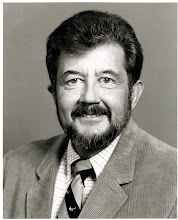The median household income in 2015 increased by 5.2% from 2014 to $56,516, the largest increase in real terms in 17 yrs.* Household income increased in every region of the U.S. with the largest increase in the West and the smallest in the the South. The increase was also felt by nearly all age groups. The increase was felt by both full-time, year-around men and women.
An increase in household income does not necessarily mean an increase in individual income because someone in the household may became employed or changed from part-time to full time or one member of the household had a big increase that more than countered small, flat or declining wages of others in the household (I urge you to read the entire article cited. Quotes are in italics.).
(Click on figure to enlarge)
Median household income in 2015 increased for many different demographic groups, including for Hispanic (6.1 percent), non-Hispanic white (4.4 percent) and black (4.1 percent) households. Although median income is highest in Asian households, their median was not statistically different between 2014 and 2015. Note that the increases (6.1 percent, 4.4 percent and 4.1 percent) are not statistically different from each other.
...........................................................................
Further, the increase was experienced by householders in nearly all age groups. By age of householder, the median household income increased for:
- 25- to 34-year-olds (5.6 percent).
- 35- to 44-year-olds (7.0 percent).
- 45- to 54-year-olds (4.2 percent).
- 55- to 64-year-olds (3.5 percent).
- Ages 65 and older (4.3 percent).
Note that the percent increases for each age group were not statistically different from each other.
.............................................................................The nation’s official poverty rate in 2015 was 13.5 percent, with 43.1 million people in poverty, 3.5 million fewer than in 2014. The 1.2 percentage point decrease in the poverty rate from 2014 to 2015 represents the largest annual percentage point drop in poverty since 1999.
The percentage of people without health insurance coverage for the entire 2015 calendar year was 9.1 percent, down from 10.4 percent in 2014. The number of people without health insurance declined to 29.0 million from 33.0 million over the period.
..............................................................................
For the second year in a row, the percentage of people without health insurance coverage dropped for every single year of age under 65, according to the American Community Survey.
..............................................................................
The American Community Survey also showed that between 2014 and 2015, the uninsured rate decreased in 47 states and the District of Columbia. The declines for the states ranged from 0.5 percentage points (Massachusetts) to 3.9 percentage points (California). Three states (North Dakota, South Dakota and Wyoming) did not experience a statistically significant change in their uninsured rate.
* http://blogs.census.gov/2016/09/13/2014-to-2015-median-household-income-is-largest-percentage-increase-since-1998/
http://www.census.gov/newsroom/press-releases/2016/cb16-158.html


No comments:
Post a Comment